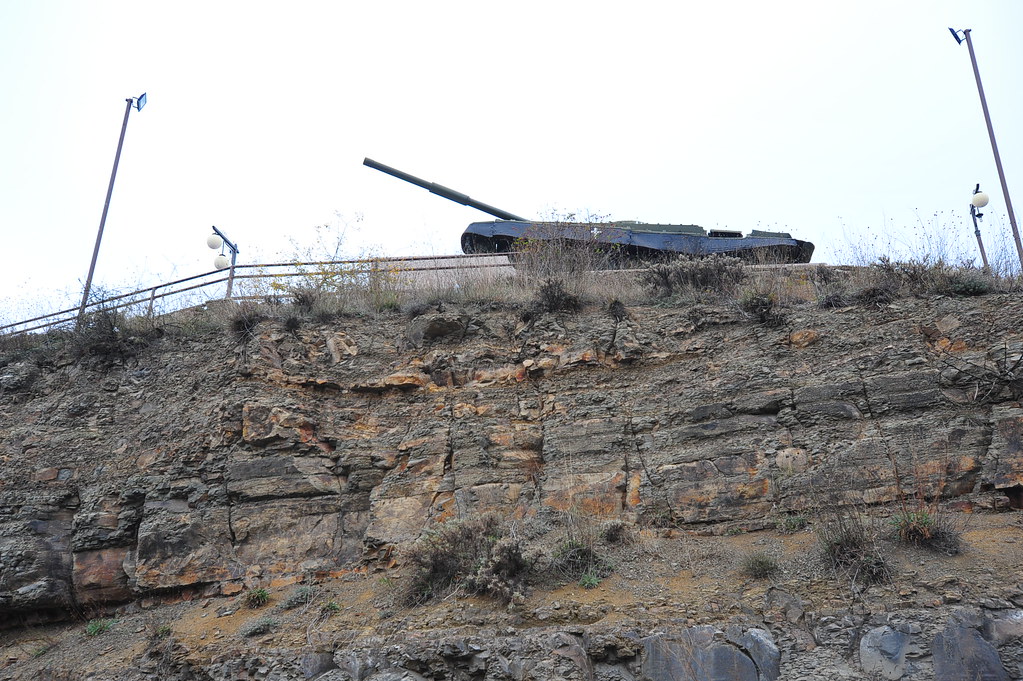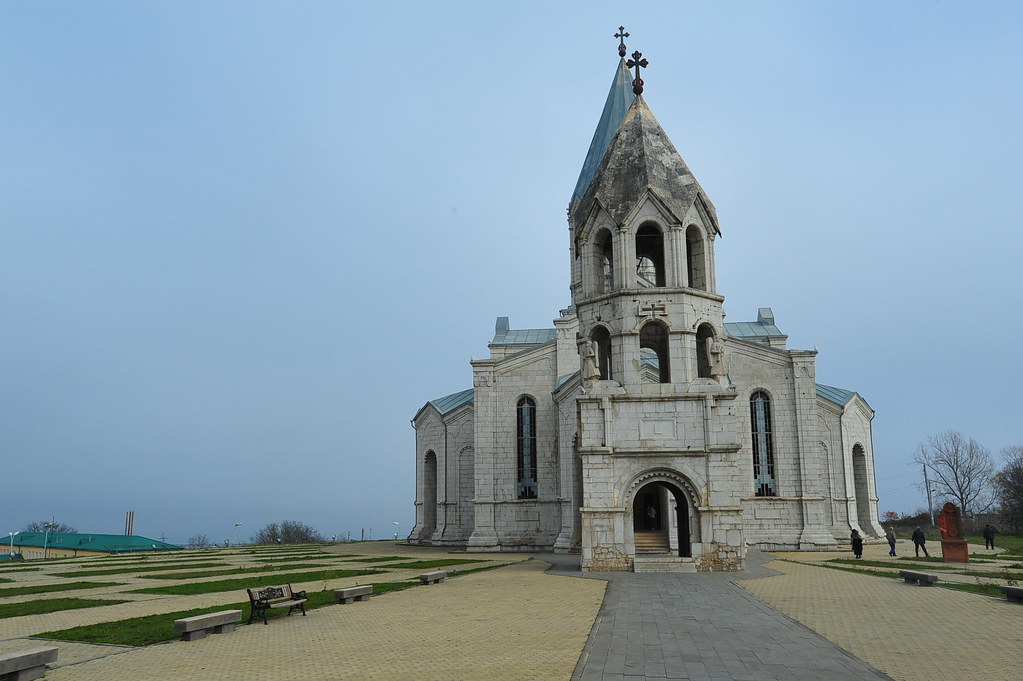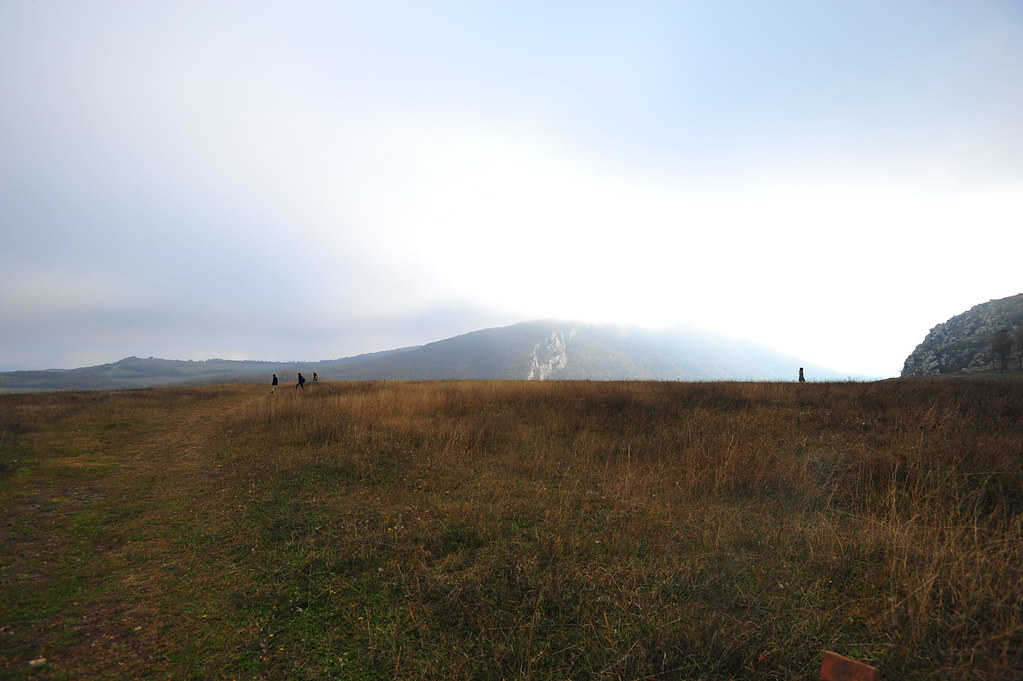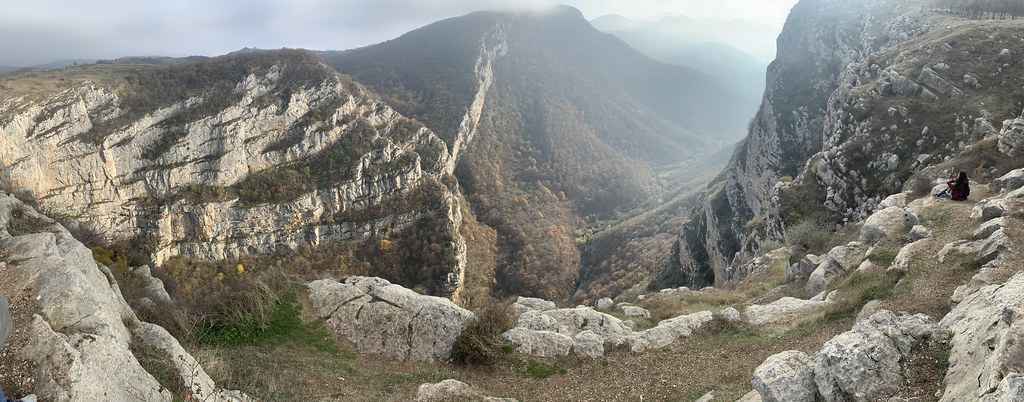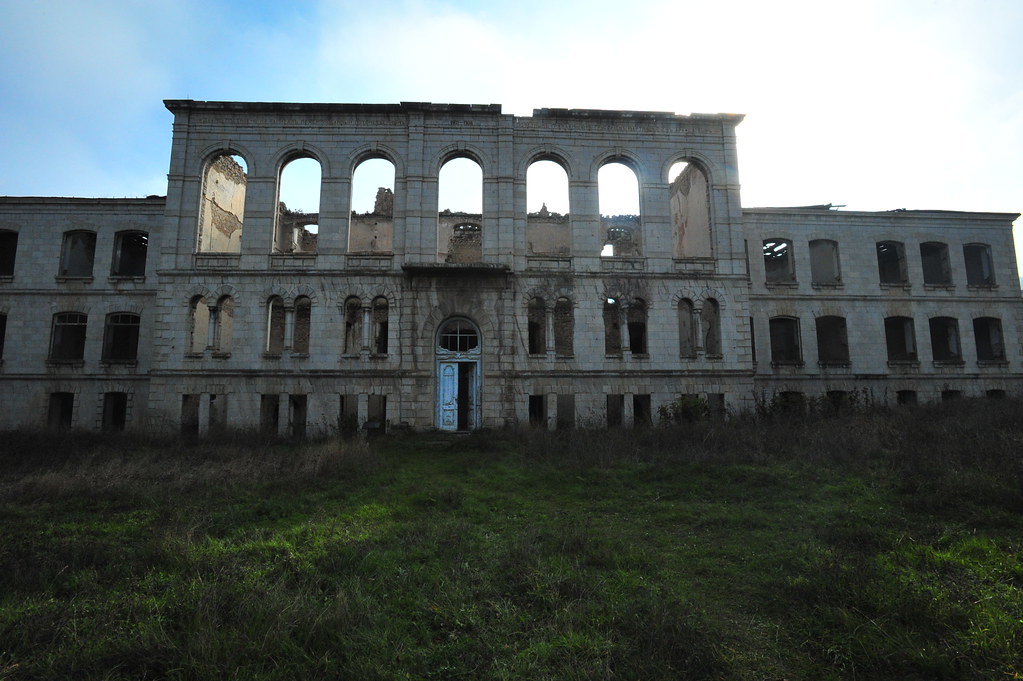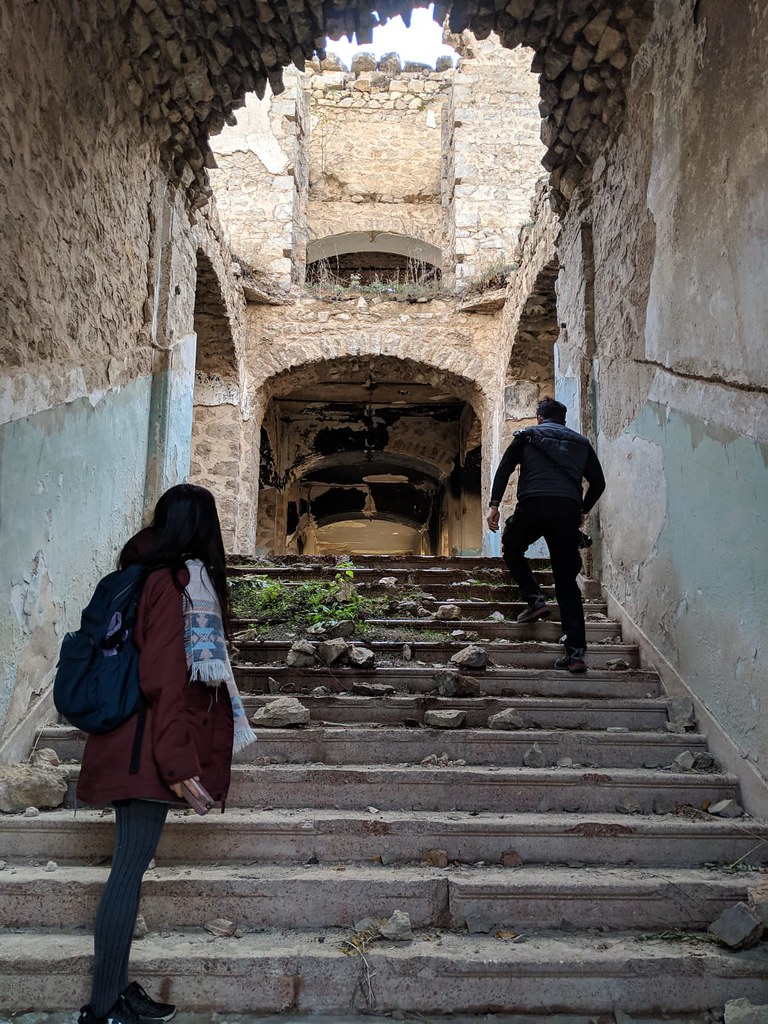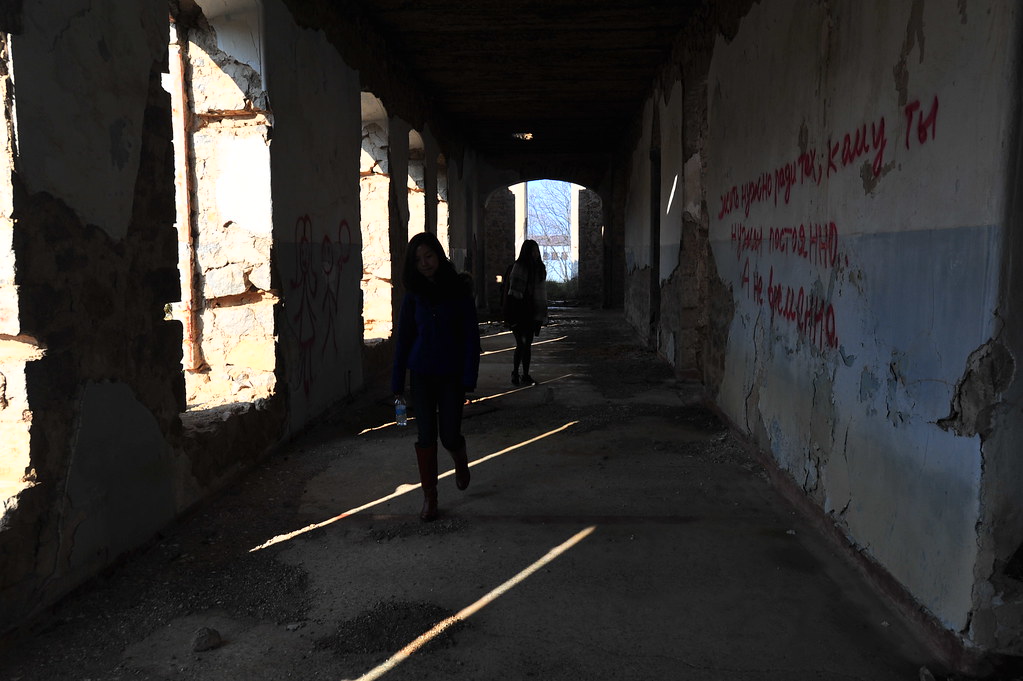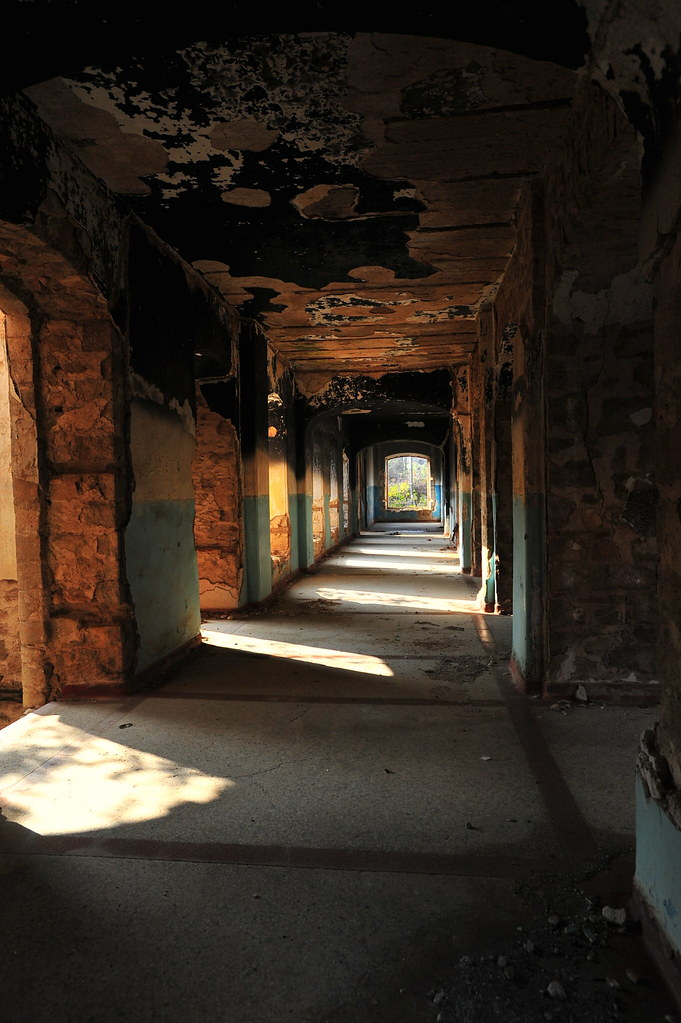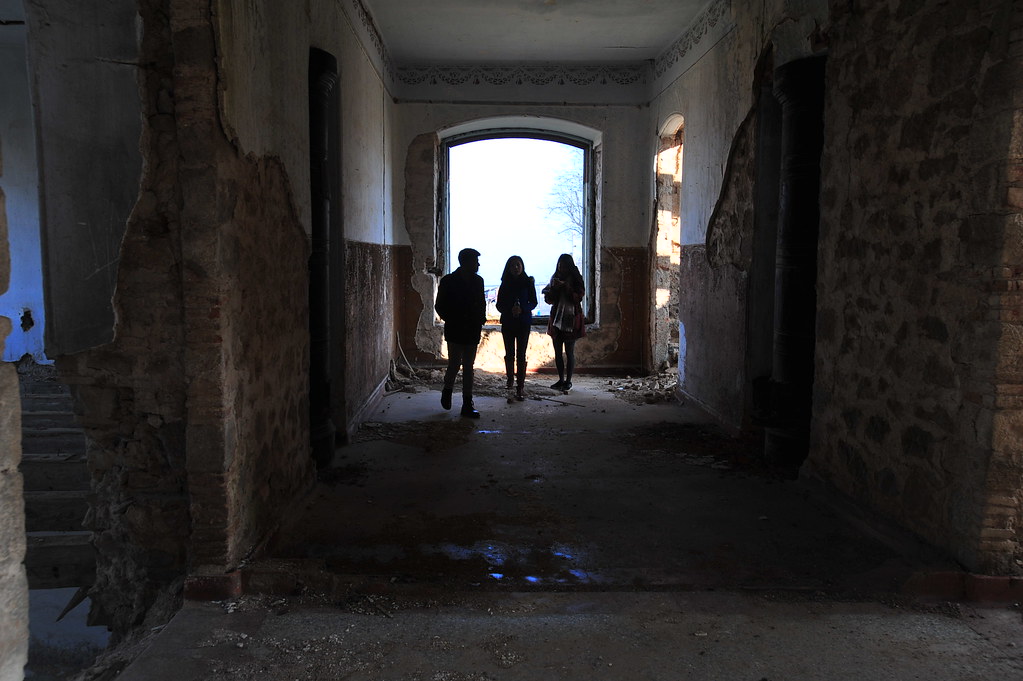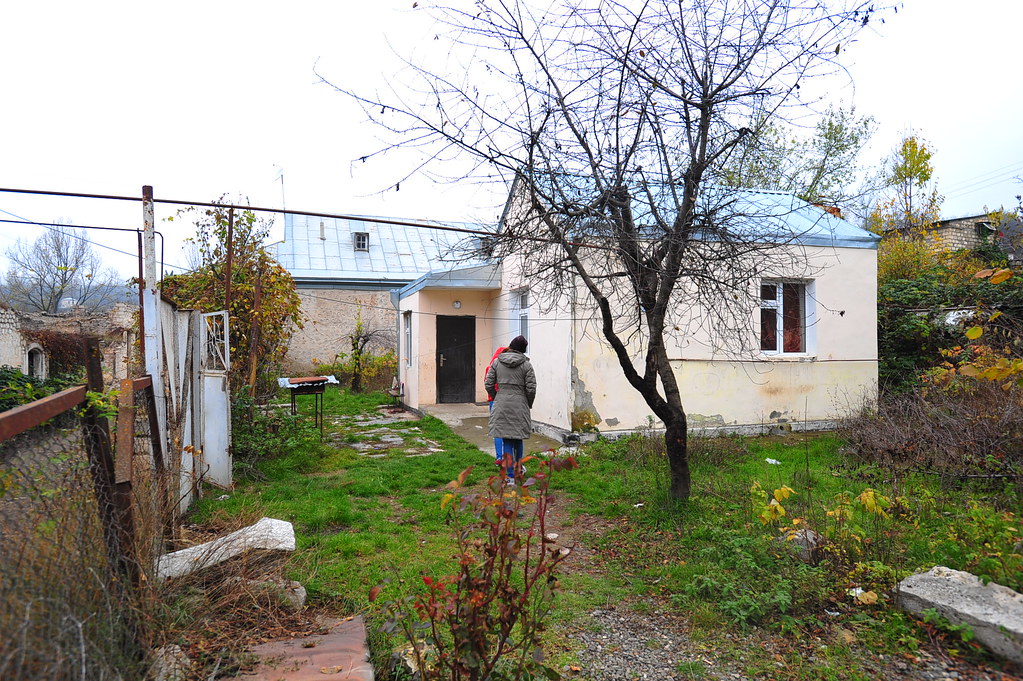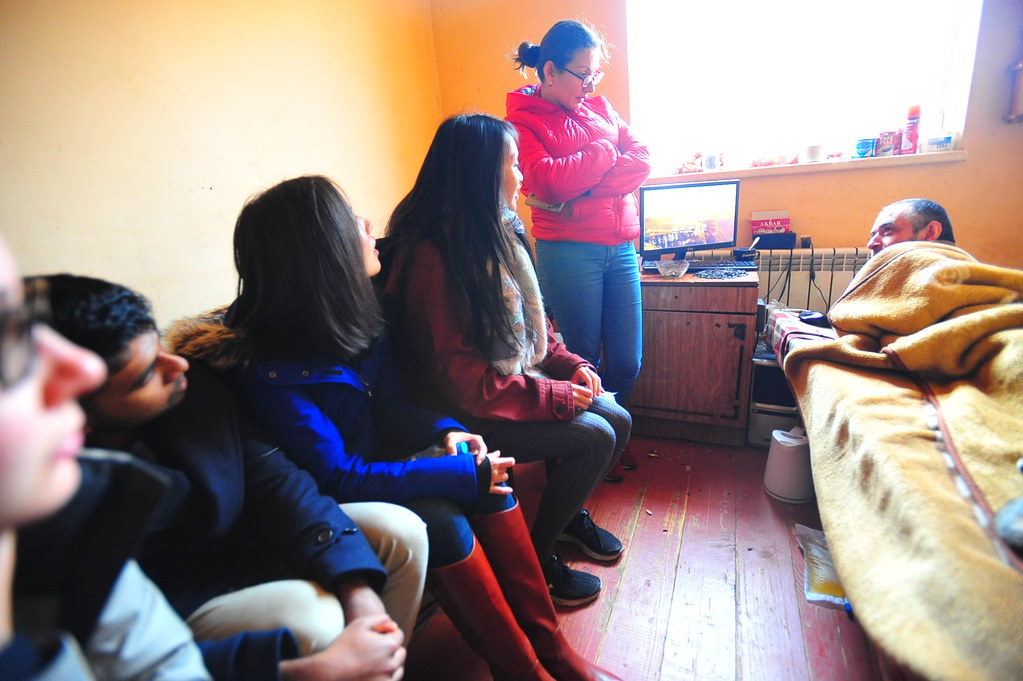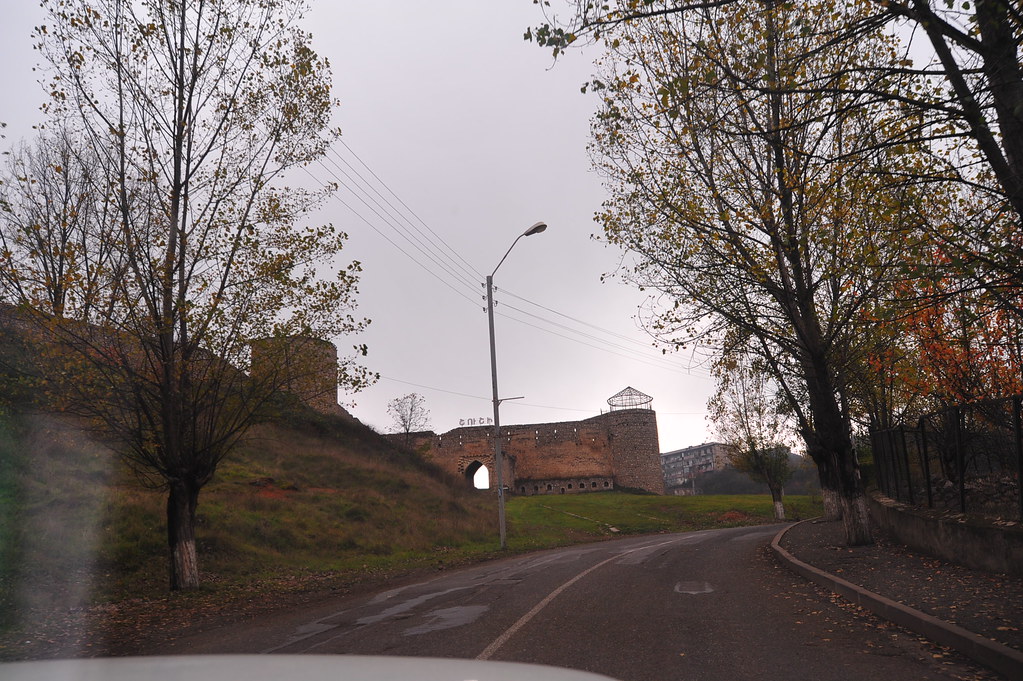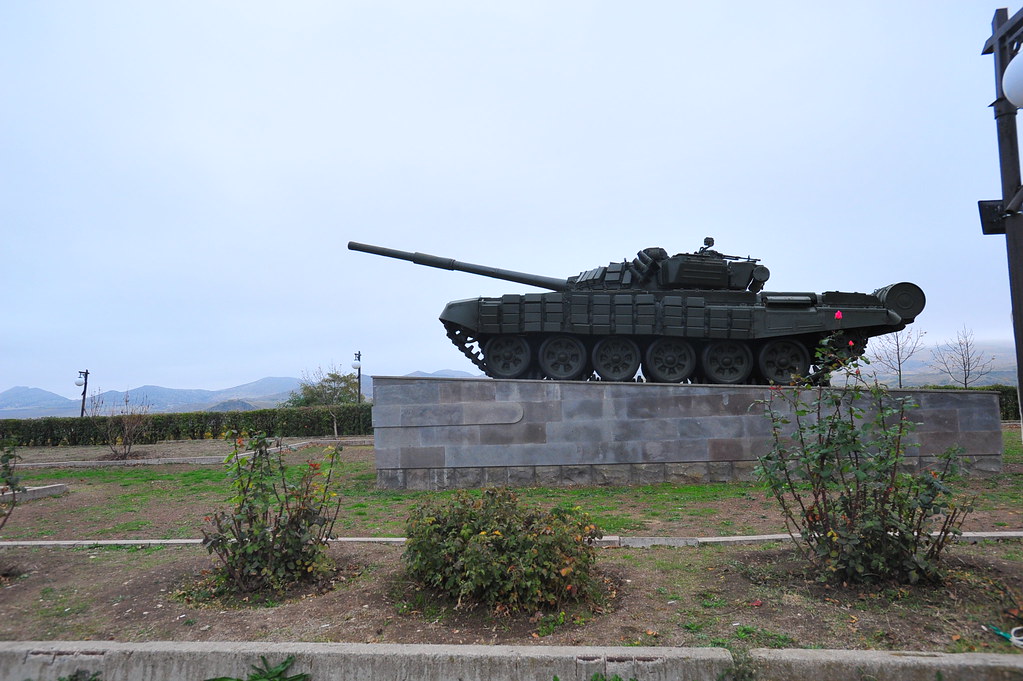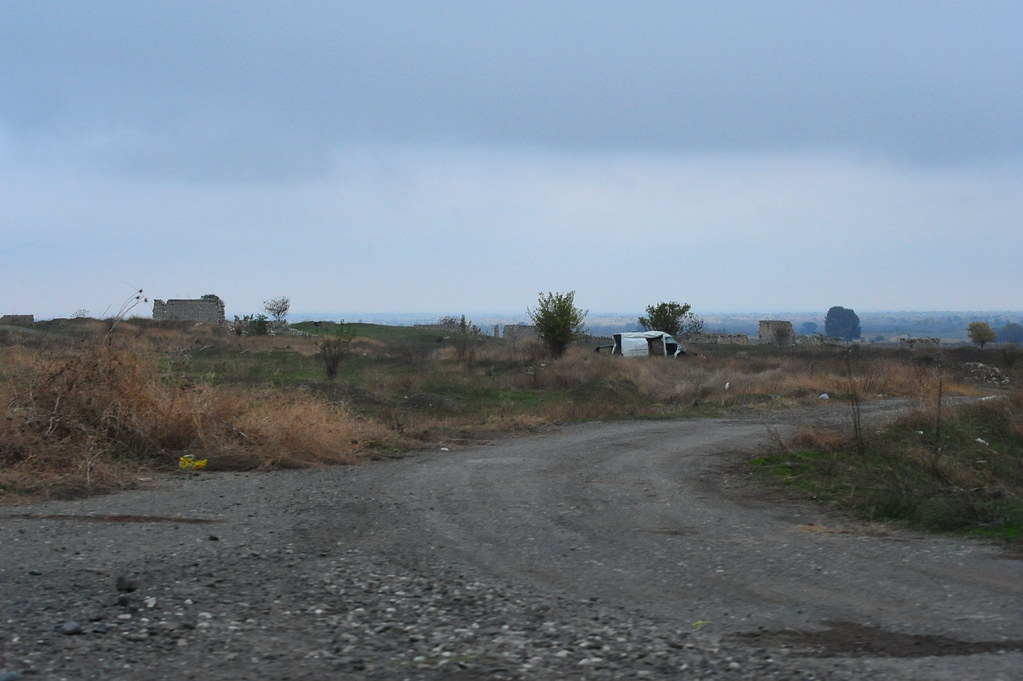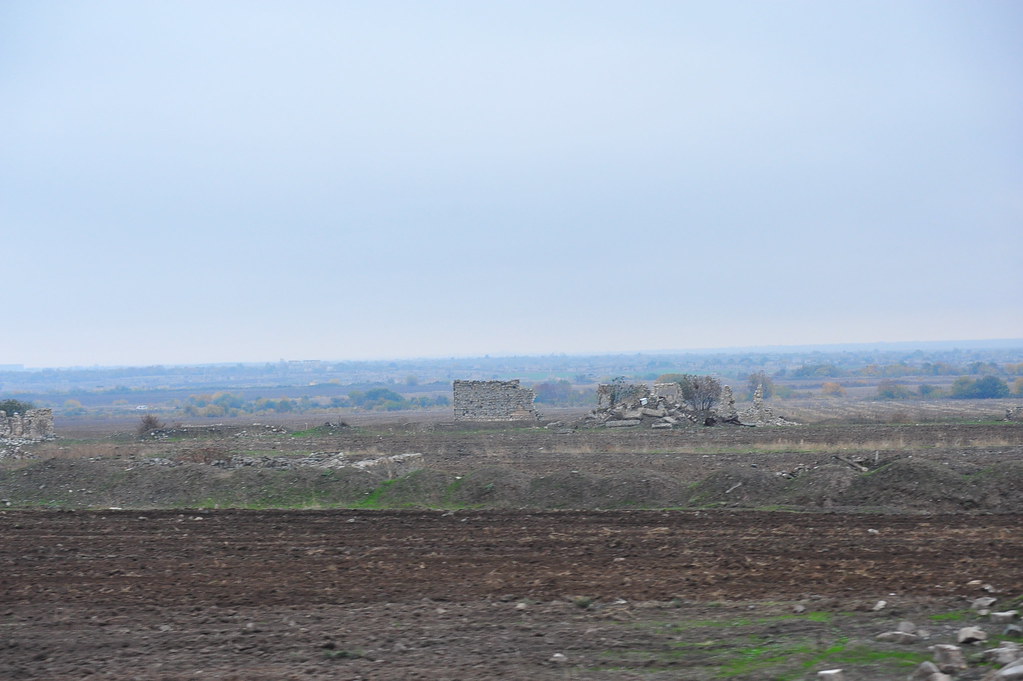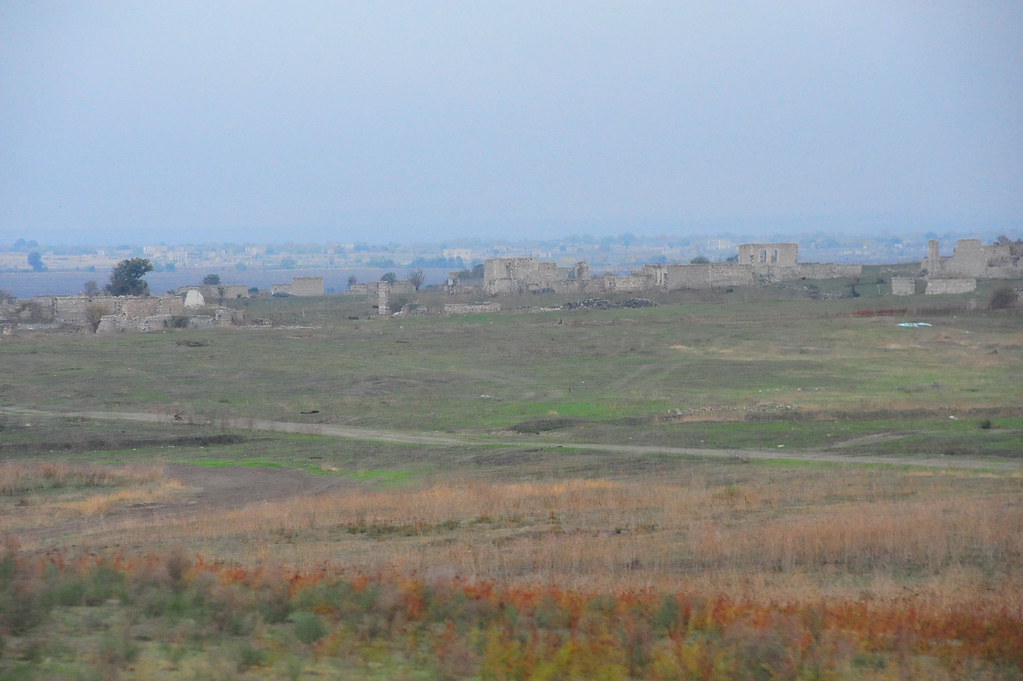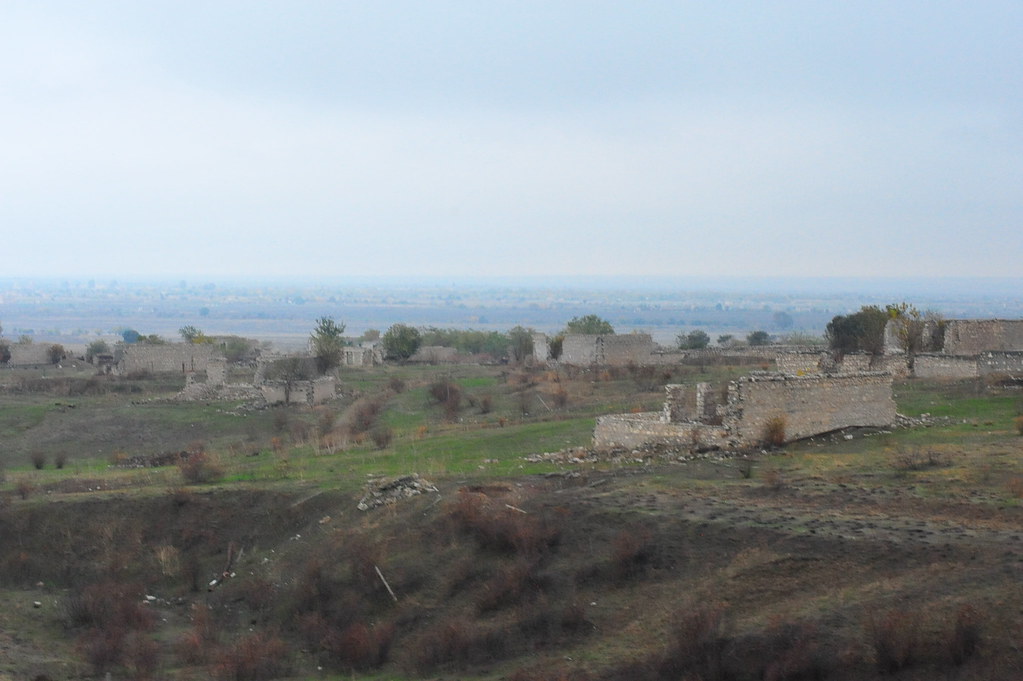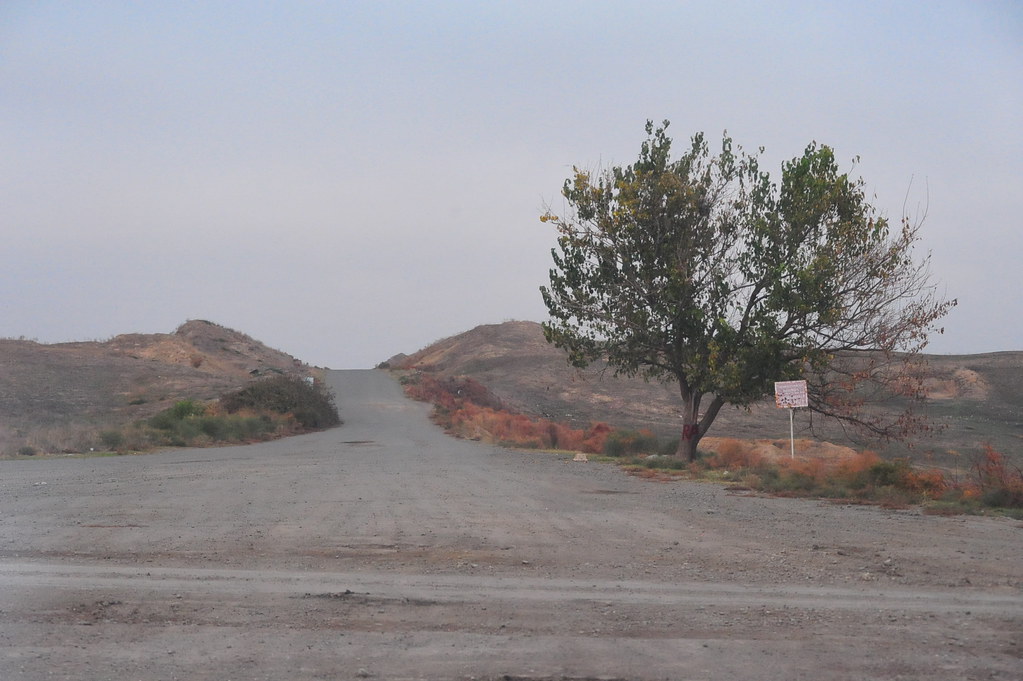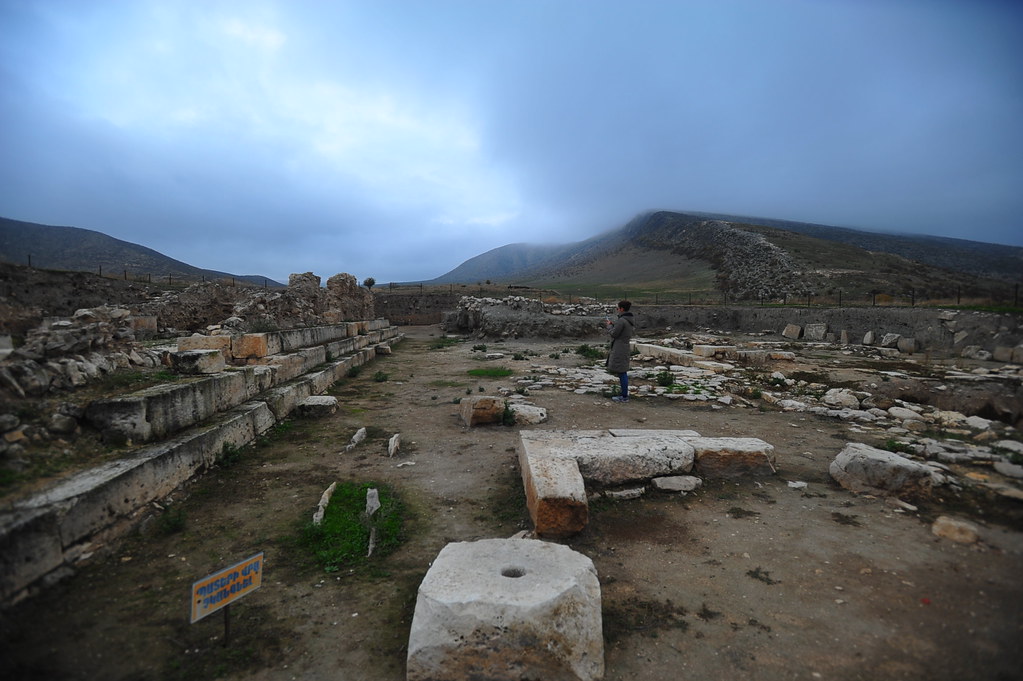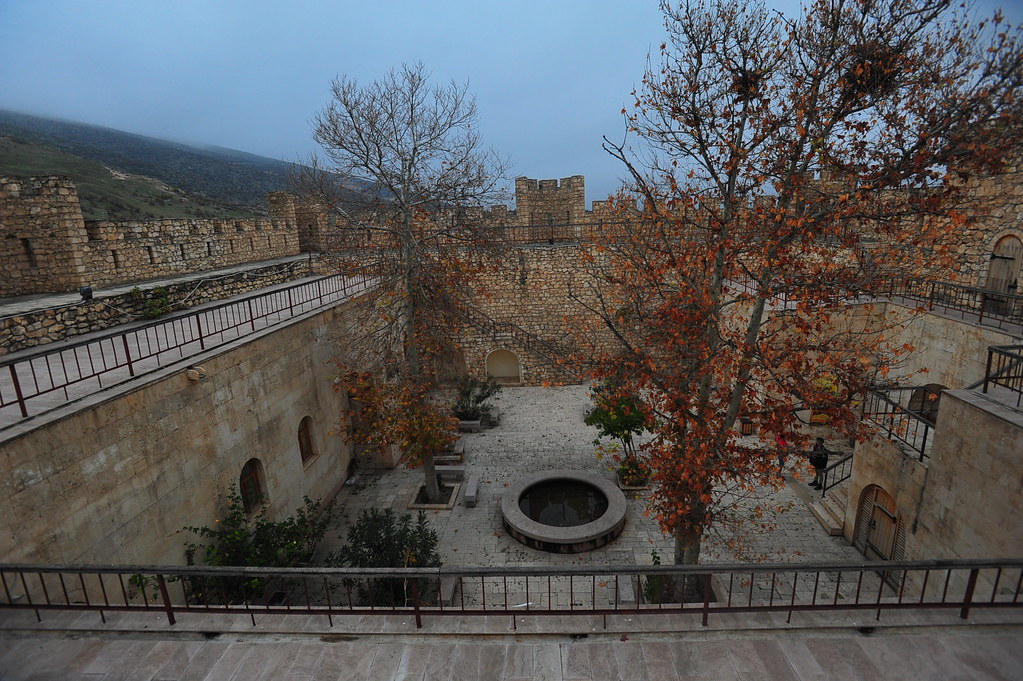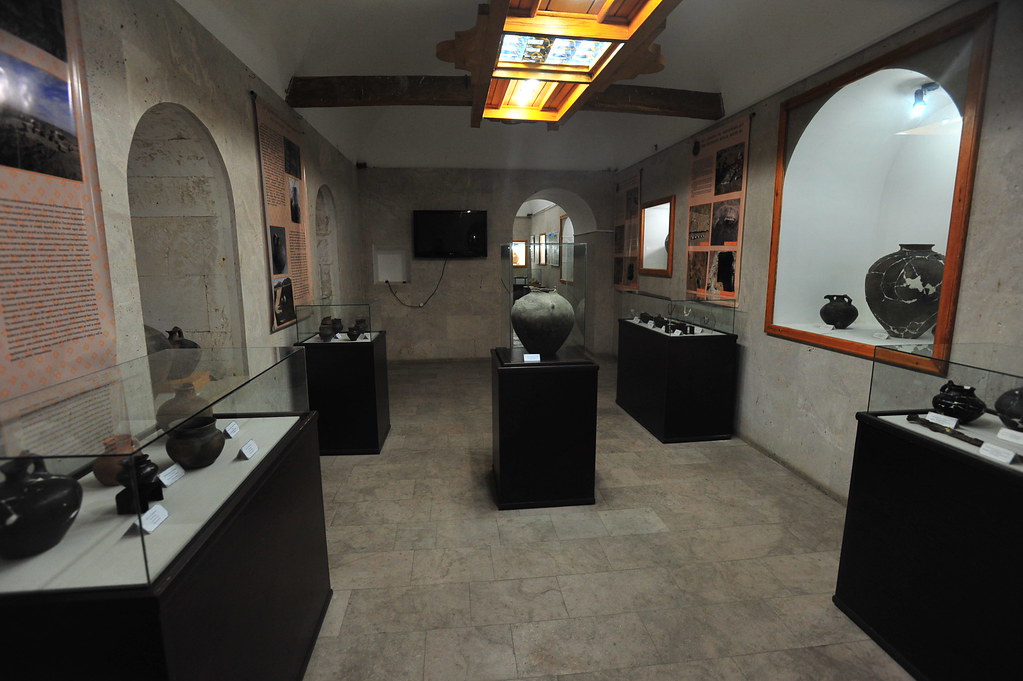After a morning in Stepanakert we headed out towards the rest of the Karabakh region to explore other areas evidently affected by the recent clashes between Azerbaijan and Karabakh/Armenian forces.
The first sign of the war was a tank memorial on a hill, refurbished from the shell of the first tank to oppose the Azerbaijani military when they took Shoushi during the 1994 war.
From here you can see the advantage of occupying Shoushi as it overlooks Stepanakert below.
Unlike Stepanakert, Shoushi retains the ghost city vibes we had mentioned earlier that would remind me of our time in Nakhchivan.
Near the entrance of the city is a church frequently booked for baptisms and weddings.
Around the edge of Shoushi is a field leading to a viewpoint of Hunot Canyon.
It seems to be built like steps; the farther you hike the more you can gradually head down into the gorge.
Inside Shoushi are a series of empty shells of bombed out buildings that still serve as reminders of the Azerbaijan/Armenian conflict in the region. The most poignant is a former school that is now used occasionally as a backdrop stage to concerts and operas.
You’re technically not supposed to go inside, but go inside we did.
This is urban exploration at its finest. We can’t guarantee that it’s a safe place to wander, but we did not have any issues, whether it was into rooms or going up and down the stairs.
In another part of Shoushi is Karabakh’s only mosque, which is now undergoing restoration.
At probably one of the most poignant moments of the trip, Susanna then introduced us to her friend living next to the mosque: A veteran commando from the 1994 war where at 19 years of age he received a bullet wound to his spine while on a mission, rendering him bedridden and paralyzed from the stomach down for the past 24 years.
He continues to live in Shoushi receiving benefits from the government. When asked if he would do it all over again, he says without a doubt he would.
After about an hour and half wandering Shoushi we drove north of Stepanakert towards Agdam, passing by Askeran Fortress
There’s also the Stepanakert Airport which given the current political situation, is barred by the Azerbaijani government from flying any commercial aircraft; helicopters and single-seater joyrides for tourists are otherwise allowed.
Therefore, the only way to leave the country for a local here is still to endure an 8 hour drive to the international airport in Yerevan.
As we approached the ruins of Agdam, we passed by another tank memorial.
And then, about 20 minutes north of Stepanakert, lies the deserted ghost town of Agdam. Described by Lonely Planet for years as the “Hiroshima of the Caucuses” — until our host Susanna had asked them to take it down — we could see why a nickname could be ascribed to this region, but also render pain to the locals that once lived here.
Miles and miles of abandoned buildings stretch as far as the eye can see.
Our 10 minute drive across the expanse of Agdam’s ruins reminded me of our drive through the outskirts of Mosul.
Then we reached the literal and figurative “end of the road.” Past this point is the limit of where the ceasefire currently holds for Armenian and Azerbaijani military forces.
The only people who can go past here without fear of provoking an international war are human rights and Red Cross volunteers.
So we made a left instead, driving towards the ancient ruins of Tigranakert, where Armenia’s greatest king once ruled from. Entry fee is 125 drams.
There’s a renovated castle that somehow still stands after being stuck in the middle of countless Azerbaijan/Armenia conflicts
It only takes 10-15 minutes to run up and down the castle.
And there’s a modest museum inside with collected pieces found from nearby excavations.
By now it was getting dark so to end the trip Susanna drove us about 45 minutes towards Martakert, the village closest to the current ceasefire border between Azerbaijan and Armenia. If rockets were to fall again, it would hit us first.
This took place just 2 years ago here:
Thanks to Susanna, we were parked up at the fanciest hotel there.
And even though only one room was left, they were very efficient with the spacing:
And with that we said goodbye to Susanna and thanked her for her hospitality in showing us around her Karabakh. As a survivor who had every reason in the world to find refuge in safer lands, she instead carries on with defiance. After all, this is her true home and who are we to cast judgments without ever knowing what it is like to grow up and live everyday with a sense of dread that war might break out nearby at any given moment?
While the possibility of war is her daily reality, those of us who live comfortably in our bubbles also must confront the possible exploitative nature of our visit; is it more for us or for them? We have been reassured by Susanna and her family that our physical presence here gives them hope that the international community has not forsaken them, and we debate whether traveling and supporting the locals here is truly the lesser of two evils; many of us could instead have chosen to turn a blind eye and never have bothered to visit at all.
As we struggle with this question with Susanna and amongst ourselves, we nevertheless realize that at the very least we will develop the stark understanding that this reality too, could arrive at our own doorsteps. And when that day comes, I only hope we may channel a similar sense of strength and bravery of the people living here, and confront that possible future with the same kind of fortitude and grace that Susanna has shown us the past 2 days.
![]()
- At time of posting in Agdam, it was 6 °C - Humidity: 91% | Wind Speed: 10km/hr | Cloud Cover: showers


